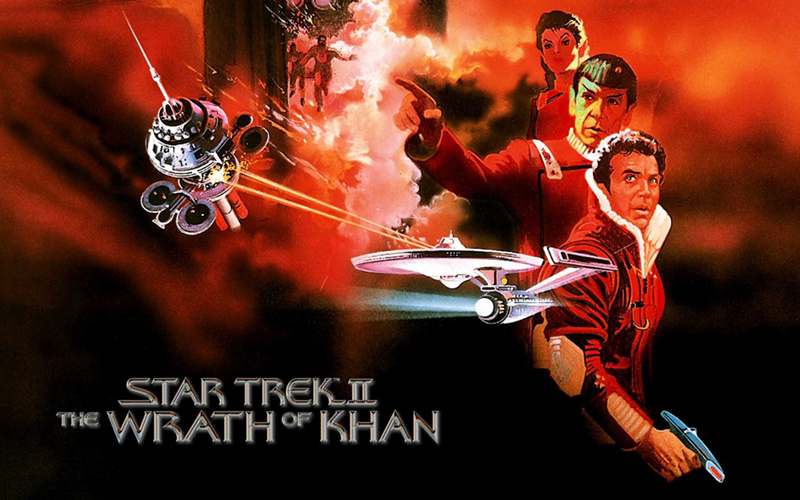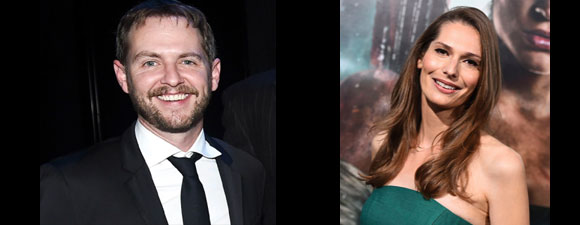Harve Bennett: Putting Trek Back On Track
3 min readAfter Star Trek: The Motion Picture, Harve Bennett was called in to see if he could make a better movie for less money. The result was the critically acclaimed Star Trek II: The Wrath of Khan followed by three Star Trek movies after that.
Bennett was a successful television producer with shows like Mod Squad, The Six Million Dollar Man and The Bionic Woman already under his belt. When asked if he could do a better Trek movie for less money by Gulf & Western boss Charles Bludhorn, he told them he could make four or five such movies. “Do it,” said Bludhorn.
 When Bennett watched the original series episode Space Seed, he knew he had what he needed to make a good movie. “It was like God had sent a present down to me,” he explained. “Space Seed ends having deposited Khan (Ricardo Montalban) on some desolate planetoid and Kirk, I think it was, saying ‘If we came back in twenty-five years, I wonder what he’d be like.’ And Spock says, ‘Hmm.’ I jumped up out of my seat and said, ‘Thank you, God! Thank you. That’s it. That’s my story.'”
When Bennett watched the original series episode Space Seed, he knew he had what he needed to make a good movie. “It was like God had sent a present down to me,” he explained. “Space Seed ends having deposited Khan (Ricardo Montalban) on some desolate planetoid and Kirk, I think it was, saying ‘If we came back in twenty-five years, I wonder what he’d be like.’ And Spock says, ‘Hmm.’ I jumped up out of my seat and said, ‘Thank you, God! Thank you. That’s it. That’s my story.'”
Bennett worked with both William Shatner and Leonard Nimoy as directors, and he found it easier to work with Nimoy than with Shatner. “Leonard came to me after Wrath of Khan and after his death scene and he said, ‘This is a lot of fun.’ And it was. We all said it was a very jolly set. He said, ‘I’m game for another one, but I’d like to direct.’ I said, ‘Terrific. I know what the next one has to be, and you got it.’
In the fourth movie, there was a little trouble with Nimoy, who felt he was ready to direct alone, but it was soon resolved. “He got a little more resentful during Star Trek IV because he figured he had proved himself,” said Bennett. “So we had a little friction there, but we resolved it and he went on to do a magnificent job on IV. His emergence as a director was his skill triumphing over his lack of experience”
But Shatner was a different story. “It is an unpleasant memory. I had a wonderful relationship with Bill. I could handle him and so forth, but as chief of the set it was going to be very difficult.” Bennett didn’t like Shatner’s idea that the story would be about finding God and the two argued about it. But in the end, the two came to the agreement that “‘OK, we will never really find God. The journey to try to find God will be the picture.’ That’s the premise on which we proceeded, but the fact of the matter is it was still a shaggy-dog story. It was a story that could not reach a climax because you could hint at God, you could present an abstraction, but it wouldn’t be satisfying dramatically.”
Bennett decided against producing Star Trek VI: The Undiscovered Country when Paramount decided against his “Starfleet Academy-style” film. “It was the best script of all and it never got produced,” he said. “…Basically it was a love story and it was a story of cadets, teenagers. And, in order to get Shatner and Nimoy in, we had a wraparound in which Kirk comes back to address the academy and the story spins off of his memory. At the end, Kirk and Spock are reunited and they beam back up to Enterprise, which would have left a new series potential, the academy, and a potential other story with the original Trek cast. All the possibilities were open, the script was beautiful, and the love story was haunting, but it didn’t happen.”






